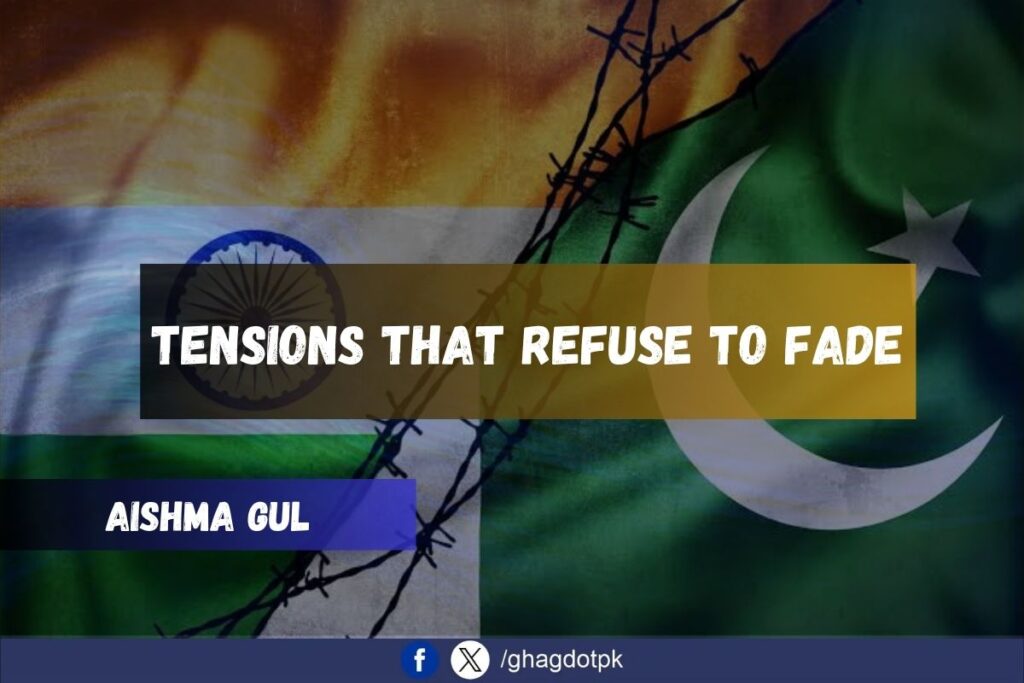By Aishma Gul
Four days of chaos, five weeks of consequences—what comes next?
Even weeks after the Indo-Pak clash ended, doubt and hostility continue to simmer. Though the shooting stopped, its shocks keep rippling out in the form of bluff, bluster, propaganda, and misinformation. What effect does a short but intense conflict have on diplomacy, security, and public trust?
Diplomatic Fallout
Pakistan’s Prime Minister Shehbaz Sharif has emphasised that Pakistan is ready to address fundamental disputes through dialogue. “Pakistan is prepared to hold constructive dialogues with India on all unresolved matters including Jammu and Kashmir, water, trade, and terrorism,” he told Saudi Crown Prince Mohammed bin Salman in a June 24 phone call.
But the regional deadlock remains. India’s External Affairs Minister S. Jaishankar warned neighbouring countries that “not working with India has a cost,” clearly referring to Pakistan’s uneasy relations. At the same time, both countries have kept their mutual airspace bans in place, showing that diplomatic channels are still closed even as these overtures are made.
Military Operations and Counterterrorism
On June 24, an intelligence-driven operation in South Waziristan left two Pakistani soldiers killed and 11 “Indian-sponsored khwarij” neutralised, according to the ISPR.
This rise in operations across Khyber Pakhtunkhwa and Balochistan underscores Pakistan’s determination to fight proxy insurgencies, with its security forces praised for their professionalism and dedication.
Proxy Warfare and Regional Stability
Experts see a shift toward indirect conflict. Filmmaker DJ Kamal Mustafa warns that India may “ramp up efforts to destabilise Pakistan…through indirect means, the classic playbook of proxy warfare.” Militancy in Pakistan’s western provinces could grow, targeting society’s fault lines. These warnings highlight the need for constant vigilance and clear messaging to counter any propaganda.
Information Warfare and Social Media Misinformation
A key feature of this confrontation was a social media war filled with hysteria and false information. Outlandish claims — like reports of Karachi Port’s destruction or an attack on Lahore — spread widely, undermining the credibility of certain Indian media outlets. In a June 24 commentary, DJ Mustafa lamented that faulty sketches in India’s Pahalgam investigation “sacrificed India’s credibility on the global stage” and said it was “a damning indictment of a government…blinded by its propaganda.”
Airspace Restrictions and Civil Aviation Impact
The closure of air corridors is a clear legacy of the clash. On June 23, Pakistan extended its ban on Indian aircraft until July 23 — the third straight month of these restrictions — and India did the same. Civilian and military flights now must take longer routes with higher costs and logistical headaches, highlighting how security tensions are spilling into everyday life.
Security in Khyber Pakhtunkhwa and Balochistan
Beyond the headline raids, smaller clashes have continued in remote areas. Since the TTP ended its ceasefire in November 2022, these renewed activities have prompted intensified security sweeps in both provinces. By focusing on intelligence-led tactics, Pakistan’s security forces aim to keep pressure on these terrorist networks, reinforcing national stability.
Regional Military Balance: Stealth Fighter Induction
Looking ahead, China’s plan to supply 40 Shenyang J-35 fifth-generation jets to Pakistan could reshape South Asia’s air-power balance. Deliveries are expected to begin by late 2025, which would make Pakistan one of the few countries operating a stealth fighter. By contrast, the Indian Air Force is “at least a decade away” from inducting its indigenous stealth fighter, the AMCA, projected around 2035. This widening gap could affect strategic planning on both sides.
Economic Consequences: Rice Exports
While security dominates headlines, economic ties feel indirect effects. When India re-entered the global rice market, analysts predicted it would cut into Pakistan’s exports. But Islamabad’s focus on premium quality has kept shipments steady — about 5.544 million tonnes in the first 11 months of FY25, nearly unchanged year-on-year. Still, rice production dipped by 3.7% in the Kharif season, and analysts now predict Pakistan’s exports could drop about 15% in April–June 2025.
The 2025 Indo-Pak confrontation was more than just a four-day clash — it was a test of the complex interplay between diplomacy, information, and deterrence. Pakistan’s security forces emerged battle-tested — capable in their use of strikes, countering misinformation, and handling logistics — while its diplomatic moves showed strategic savvy.
But real victory won’t come from these temporary standoffs. It will require building institutions and mechanisms to prevent escalation: reliable backchannel dialogues, strong social-media fact-checking systems, and a forward-looking defence posture backed by advanced technology. Only by combining these efforts into a unified strategy can Pakistan turn post-war tensions into a stable balance — moving from simply reacting to crises to proactively ensuring its security.






